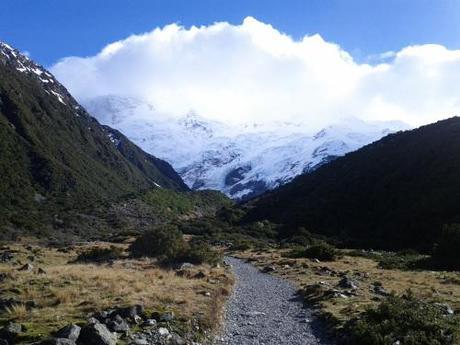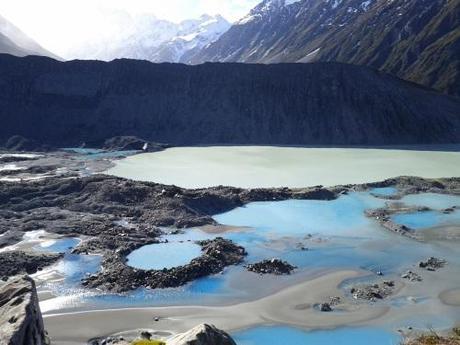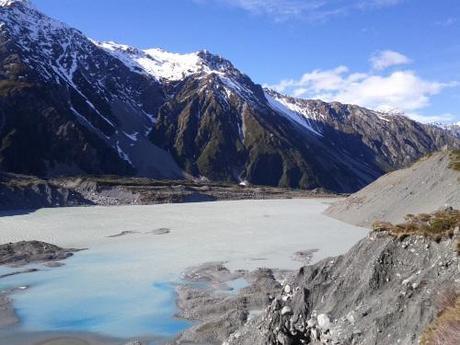Recently I was lucky enough to pay a visit to the South Island of New Zealand. I am actually a Kiwi by birth (that’s why it’s so easy for me to work in Australia) but grew up in Canada. This was my first visit back since I left as a baby – in fact, we were in my hometown exactly 20 years to the day after I left. We didn’t plan this, but it was a neat coincidence to discover.
Among the many places we visited was Aoraki / Mt. Cook National Park in the Southern Alps. It was my first experience of an alpine environment and I absolutely loved it. It was also my first glacier sighting – a momentous day in the life of any climate scientist.
There are 72 named glaciers in the park, of which we saw two: the Hooker Glacier and the Mueller Glacier. The latter is pictured below as seen from the valley floor – the thick, blue-tinged ice near the bottom of the visible portion of the mountain. As it flows downward it becomes coated in dirt and is much less pretty.

Along with most of the world’s glaciers, the Mueller is retreating (see these satellite images by NASA). At the base of the mountain on which it flows, there is a large terminal lake, coloured bright blue and green from the presence of “glacial flour” (rock ground up by the ice). According to the signs at the park, this lake has only existed since 1974.

In the photo above, you can see a large black “sill” behind the lake, which is the glacial moraine showing the previous extent of the ice. Here’s a photo of the moraines on the other side, looking down the valley:

It’s hard to capture the scale of the melt, even in photos. But when you stand beside it, the now-empty glacial valley is unbelievably huge. The fact that it was full of ice just 50 years ago boggles my mind. Changes like that don’t happen for no reason.
